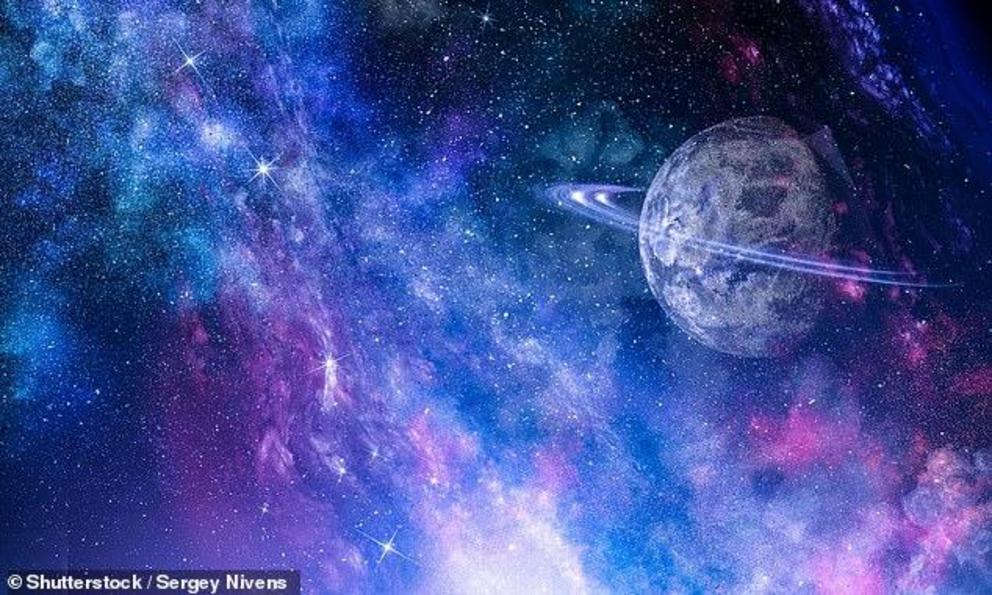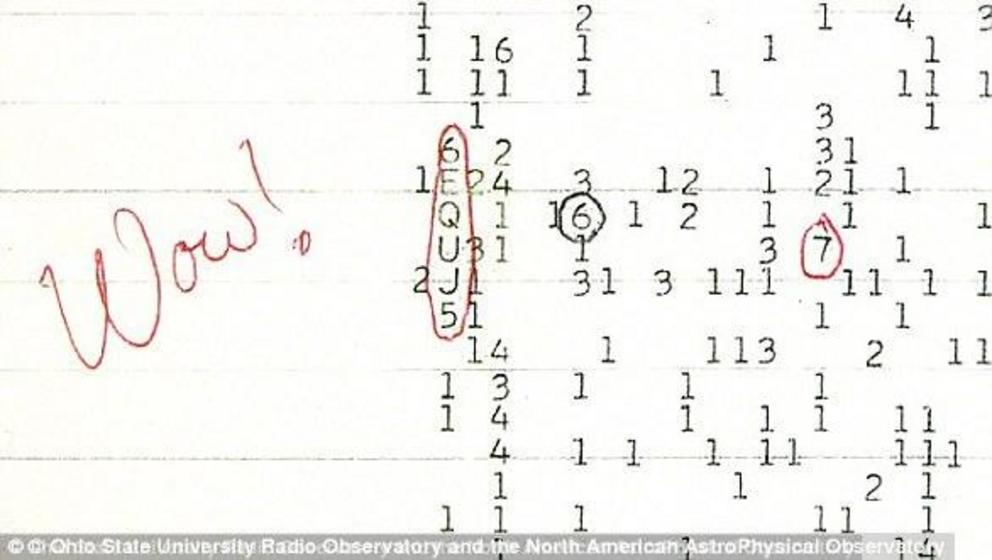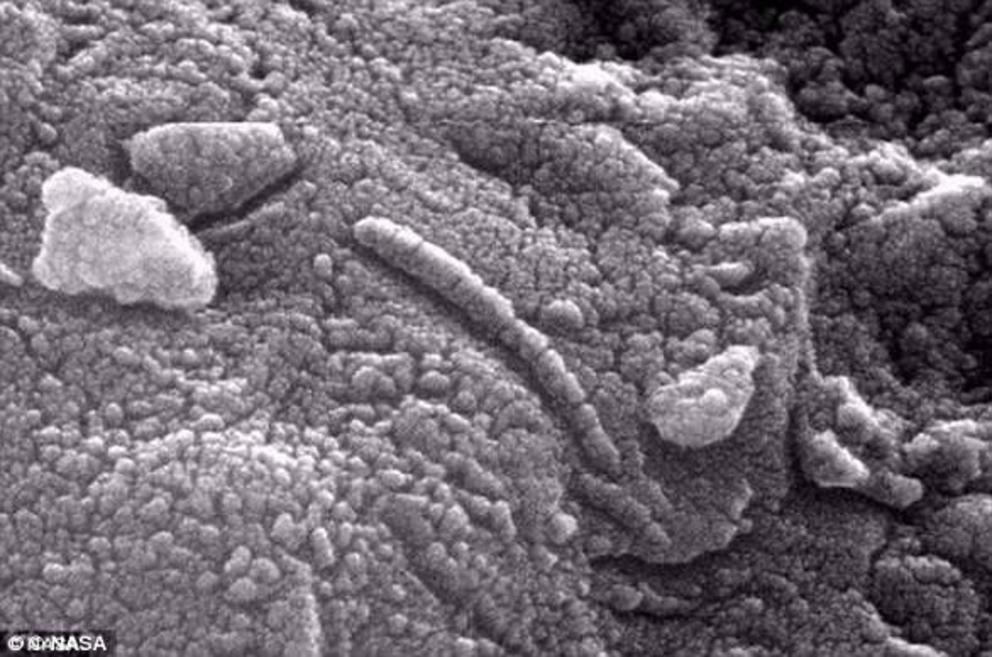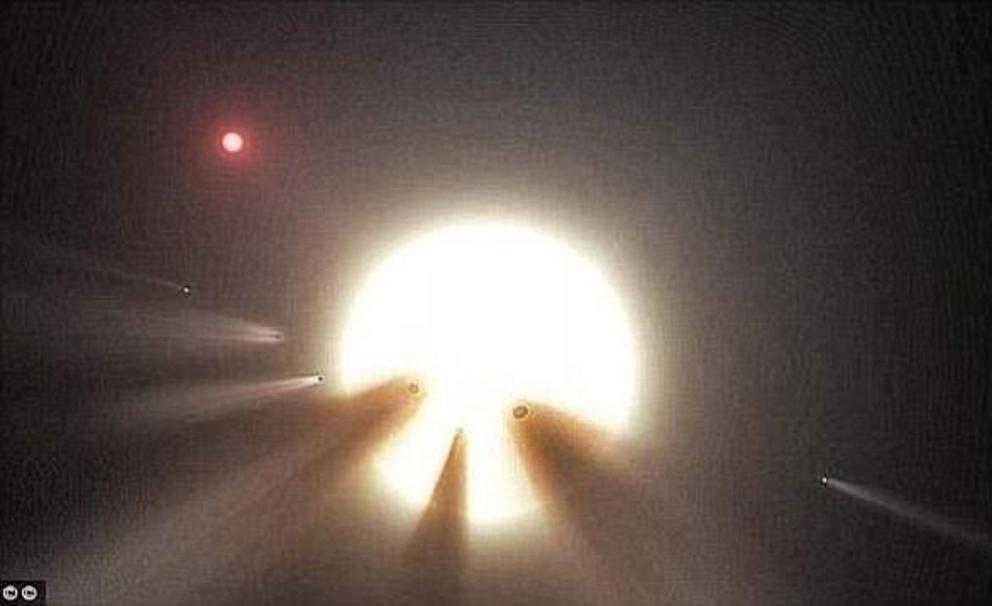Organisms on other planets may have evolved to harness the power of the sun using a chemical with a lavender hue
Alien life may be purple.
That's according to a new study, which suggests organisms living on other planets evolved to harness the power of the sun using a chemical with a lavender hue.
Scientists say microbes developed the same pigment billions of years ago on Earth, long before the arrival of the green plants we know today.
They argue that microscopic life on other planets could follow the same evolutionary path - a theory that threatens to change how we search for extraterrestrial life.

Alien life may be purple. That's according to a new study, which says organisms living on other planets likely evolved to harness the power of the sun using a chemical with a lavender hue (stock image)
Researchers at the University of Maryland and University of California, Riverside, based their theory on Earth's early history.
Plants use a chemical known as chlorophyll to absorb energy from the sun, but they don't absorb green light.
This is odd because green light is very energy-rich, suggesting early plantlife avoided using it due to competition from other sunlight-absorbing life.
One theory is that microorganisms that existed long before plants learned to harness the sun's energy using a chemical known as retinal.
Retinal has a purple hue and absorbs green light very well.
It is used by several lavender-coloured types bacteria on Earth, which have been found in locations ranging from the deep sea to the Antarctic Dry Valley.

Scientists say tiny organisms developed the same chemical billions of years ago on Earth, long before the arrival of the green plants we know today. They argue that microscopic life on other planets could follow the same evolutionary path (stock image)
Scientists have previously suggested these purple bacteria were once so populous that they pushed plants from evolving an ability to absorb green light.
Instead, plants dodged the competition by evolving chlorophyll - which largely absorbs red and blue light.
The new study proposes that this same series of events could be happening on other planets, including those within the solar system.
Researchers have already developed instruments that can scan the surface of planets for the light given off by green-coloured life.
Scientists behind the new paper suggest we should also develop ways to search for purple life on alien worlds.
'Astronomers have discovered thousands of new extrasolar planets recently and are developing the capacity to see surface biosignatures' lead author Dr Shiladitya DasSarma told Live Science.
'If these organisms were present in sufficient densities on an exoplanet, those reflection properties would be imprinted on that planet's reflected light spectrum.'
WHAT ARE THE KEY DISCOVERIES HUMANITY HAS MADE IN ITS SEARCH FOR ALIEN LIFE?
Discovery of pulsars
British astronomer Dame Jocelyn Bell Burnell was the first person to discover a pulsar in 1967 when she spotted a radio pulsar.
Since then other types of pulsars that emit x-rays and gamma rays have also been spotted.
Pulsars are essentially rotating, highly magnatised neutron stars but when they were first discovered it was believed they could come from aliens.
'Wow!' radio signal
In 1977, an astronomer looking for alien life in the nigh sky above Ohio spotted a powerful radio signal so strong that he excitedly wrote 'Wow!' next to his data.

In 1977, an astronomer looking for alien life in the nigh sky above Ohio spotted a powerful radio signal so strong that he excitedly wrote 'Wow!' next to his data
The 72-second blast, spotted by Dr Jerry Ehman through a radio telescope, came from Sagittarius but matched no known celestial object.
Conspiracy theorists have since claimed that the 'Wow! signal', which was 30 times stronger than background radiation, was a message from intelligent extraterrestrials.
Fossilised martian microbes
In 1996 Nasa and the White House made the explosive announcement that the rock contained traces of Martian bugs.
The meteorite, catalogued as Allen Hills (ALH) 84001, crashed onto the frozen wastes of Antarctica 13,000 years ago and was recovered in 1984.
Photographs were released showing elongated segmented objects that appeared strikingly lifelike.

Photographs were released showing elongated segmented objects that appeared strikingly lifelike (pictured)
However, the excitement did not last long. Other scientists questioned whether the meteorite samples were contaminated.
They also argued that heat generated when the rock was blasted into space may have created mineral structures that could be mistaken for microfossils.
Behaviour of Tabby's Star in 2005
The star, otherwise known as KIC 8462852, is located 1,400 light years away and has baffled astonomers since being discovered in 2015.
It dims at a much faster rate than other stars, which some experts have suggested is a sign of aliens harnessing the energy of a star.

The star, otherwise known as KIC 8462852, is located 1,400 light years away and has baffled astonomers since being discovered in 2015 (artist's impression)
Recent studies have 'eliminated the possibility of an alien megastructure', and instead, suggests that a ring of dust could be causing the strange signals.
Exoplanets in the Goldilocks zone in 2015
In February this year astronomers announced they had spotted a star system with planets that could support life just 39 light years away.
Seven Earth-like planets were discovered orbiting nearby dwarf star 'Trappist-1', and all of them could have water at their surface, one of the key components of life.
Three of the planets have such good conditions, that scientists say life may have already evolved on them.
Researchers claim that they will know whether or not there is life on any of the planets within a decade, and said 'this is just the beginning.'
For full references please use source link below.
